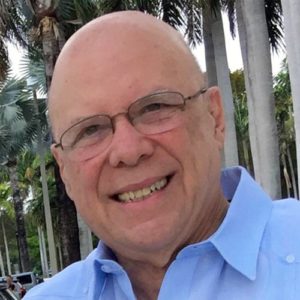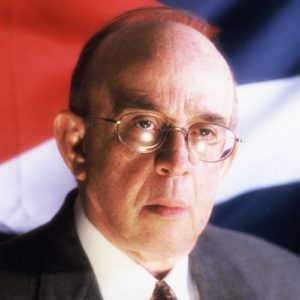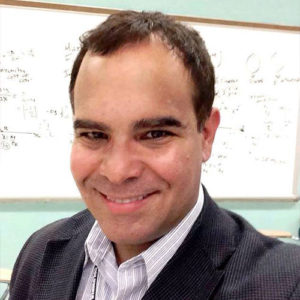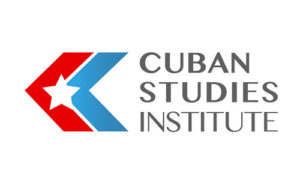By Pedro Roig
As a historian and attorney this outline on the assassination of John F. Kennedy, searches into the essential issue of what the CIA and the FBI knew about Lee Harvey Oswald’s visits to the Cuban consulate in Mexico City prior to Kennedy’s assassination, the role of comandante Rolando Cubela in Kennedy’s plot to kill Fidel Castro (1972-1973), and Fidel Castro’s complicity role on Kennedy’s assassination.
Starting with a basic question: Could President Kennedy’s assassination had been prevented if the CIA and the FBI had alerted the Secret Service and Dallas FBI office about Lee Harvey Oswald disturbing behavior at the Cuban and Soviet consulates in Mexico City?
The answer given by Clarance Kelly, the successor of J. Edgard Hoover as FBI Director, is an emphatic YES! Kelly asserted that if the FBI Dallas’ Office had been aware of what was known elsewhere in the FBI and CIA about Oswald “without doubt, John F. Kennedy would not have died in Dallas on November 22, 1963.” Kelly said: “History would have taken a different turn.”[1]
At the time, the CIA and the FBI knew that Oswald was a former U.S. Marine sharpshooter, a self-proclaimed communist nicknamed by his Marines fellow corpsmen as “Owaldskovich” [2] with an obsessive admiration for the Soviet utopia, Fidel Castro and the Cuban Revolution. After two court-martials and a nervous breakdown, Oswald was discharged from the Marines on September 11, 1959. It took Oswald five weeks to defect to the Soviet Union.
Oswald Contact with Cuban Security Agents
- It is now evident that Oswald made contact with Cuban intelligence officers while stationed at “El Toro” Marine Air Base in Santa Ana, California.
- In response to the Warren Commission investigation, Nelson Delgado a U.S. Marine friend of Oswald, testified that Oswald kept on asking him “how he could help Castro.”
- Delgado recommend Oswald to get in touch with the Cuban Embassy. “After a while he told me he was in contact with them.”[3]
- Under oath, Delgado stated that “Oswald told him he was receiving mail from Cubans and had developed contact with Cuban government officials in Los Angeles.”[4]
- Delgado recalled that Oswald met with an unknown visitor. “It was a man…a civilian… and they spent about one and a half, two hours talking.”[5]
- On October 16, 1959, Oswald defected to the Soviet Union.
- The Soviet main security agency, the KBG’s policy with defectors like Oswald was to keep them under close survaillance, provide a job and comfortable accommodation.
- The KGB officers perceived Oswald as “mentally unstable.[6]”
- In January 7, 1960, Oswald was sent to live in the Russian city of Minsk.
- He was assigned to work at a radio and television factory.
- Oswald dated several women and eventually married Marina Prusakova. They had a baby girl.
- In Minsk, Oswald was directed to enroll in the Foreign Language School in Ulyanov Street.
- By a suspious coincidence, the school was adjacent to the KGB Academy, attended by Cuban security personnel.
- Among the Cubans that participated in the KGB spying courses, were prominent Cuba security officers, including Ramiro Valdés, the Ministry of Interior (MININT), Jose Abrantes and Fabian Escalante. [7]
- Marina’s uncle Ylia Prusakova was a high-ranking executive of the KGB Academy.
- During Marina’s interrogation after the Kennedy assassination, she testified that Oswald bragged that he had gotten close to some of the Cubans.[8]
- Marina remembered the Cubans with pleasant memories” “They were outgoing and joyful…. Often played the guitar…dance so well. They were such fun.”[9]
- On June 1961, Oswald, Marina and the baby, left Russia, and settled in Dallas, Texas.
Oswald Visit to the Cuban Consulate in Mexico City
In April 1963, Oswald briefly moved to New Orleans, where he became a militant advocate of the “Fair Play for Cuba Committee.” The FPCC was a Communist front that supported the Castro’s Marxist-Leninist revolution. While distributing pro-Castro propaganda he had a confrontation with Cuban exiles that was reported by the city police.
On September 27, 1963, Oswald traveled by bus to Mexico City, and visited the Cuban and the nearby Soviet Consulate several times (the Cuban Consulate was located within the fenced Cuban Embassy). It was the frequency of Oswald walking back and forth that caught the CIA agents’ attention in their surveillance facility across the street from the Cuban Consulate.
Winston Scott, the chief of the CIA station in Mexico (1956-1969), wrote in his unpublished autobiography Foul Foe: “Lee Harvey Oswald became a person of great interest to us during the September 27 to October 2, 1963 period…. Every piece of information concerning Oswald was reported immediately after it was received. These reports were made on all his contacts, with both the Cuban Consulate and the Soviets…Persons watching these embassies photographed Oswald as he entered and left; and clocked the time he spent on each visit.”[10]
In March 1968, President Lyndon Johnson, who was deeply disturbed by the confusing information on Oswald’s visit to the Cuban consulate in Mexico City, requested from his close associate Marty Underwood to meet with Winton Scott in Mexico City.[11]
The timing was excellent. One month earlier, Scott and his assistant Anne G. Goodpasture had completed an exhaustive nine-month review of Oswald’ stay in Mexico City, as ordered by the CIA director Richard Helms (1966-1973). In their investigation a startling event was uncovered. A solo passenger that flew from Havana to Dallas via Mexico City.
In the meeting with Underwood, Scott stated that early in the morning of November 22, 1963, a small Cuban airplane landed at the Mexico City Airport. The passenger transferred to another plane, that immediately took off for Dallas, Texas. Later that evening, the same plane returned from Dallas and the individual transferred to the Cuban aircraft the flew back to Havana. After many months of investigation, the CIA was confident that the individual was Fabian Escalante.[12] In 1993 Escalante was appointed Director of the Cuba’s Institute of Security Studies.
With the largest and efficient operational personnel in the Americas and state-of-the-art spaying equipment the capability of the Mexico City’s CIA station had a hard-won reputation for knowing everything about the Cuban and Soviet Embassies. Its operation was designed to ensure that every phone line was tapped, and every visitor photographed.[13]
State Department: “Do Not Implicate Cuba”
What happened to the CIA files on Oswald visit to the Cuban Consulate in Mexico City? Why was it marginally mentioned in the Warren Commission Assassination Report?
Thomas Mann has the answer. The former U.S. Ambassador to Mexico (April 18, 1961-December 22, 1963) stated to the House investigating officers that he was personally ordered by the State Department, a few days after Oswald murdered President Kennedy, to shut down any investigation that would implicate Cuba’s involvement in the assassination.[14]
Early on Saturday 23, 1963, (the day after Kennedy’s assassination), President Lyndon Johnson was briefed by CIA director, John McCone (1961-1965), on Oswald’s visit to the Cuban and Soviet Consulate in Mexico City. In the evening, McCone informed Dean Rusk, the Secretary of State, on Oswald’s visits to the Cuban Consulate. Dean Rusk learned that Silvia Duran, the young mexican communist secretary of the Cuban Consulate and a Cuban intelligence agent, was under arrest by the Mexican police in response to Winston Scott’s request.[15] She was the first to receive Oswald at the consulate and met him latter on several occasions.[16]
Duran arrest created concern in Washington. A top CIA official Tom Karamessinger wrote an urgent memo to Win Scott with specific instructions: “Arrest of Sylvia Duran is extremely serious matter which could prejudice (us)… Request you ensure that her arrest is kept absolutely secret, that no information from her is published or leaked.”[17]
Fidel Castro vs. John F. Kennedy
They were the political antithesis of each other. While Castro proposed the dogmatic veneration of the Marxist ideology, the use of totalitarian crimes to defend his absolute power from the challenge of courageous fighters. Kennedy, the youngest president of the United States, was to become the champion of civil rights and individual freedom, while Fidel Castro was the essence of the “Orwellian Big Brother” totalitarian state, in close strategic cooperation with the Soviet Union. The clash was unavoidable.

On December 24, 1962, the Brigade 2506 was released from Castro’s prison and flew to Miami. On December 29, 1962, John and Jacqueline Kennedy met at the Orange Bowl with the veteran fighters of the Bay of Pigs, and over 40,000 Cuban exiles. On that day the returning veterans gave Kennedy the flag of the Brigade and the President sworn a spontaneous oath that the Brigade flags was to “fly again in a free Havana.”[18]
From that day on, Castro went on a rampage of vituperations against John F. Kennedy. The mutual antagonism had escalated. It was a personal fight to the end.
Rolando Cubela Secade: The Double Agent Choice to Kill Fidel Castro
Rolando Cubela, emotionally unstable and courageous warrior, was a founder member of the Directorio Revolucionario (DR), and later a leader of the DR guerrilla forces fighting Batista’s regime in the Escambray Mountains in Central Cuba. He was wounded, leading the rebel forces in the capture of Santa Clara, capital of Las Villas province, where he fought side by side with “Che” Guevara.
Upon his return to the Escuela de Medicina at the University of Havana, Cubela, with the support of Raul Castro, ran for president of the University of Havana Student Federation. Despite a bitter election, Cubela won and became a popular leader, with the top rank of “comandante” of the revolution.
By 1961, Cubela portrayed himself as betrayed by Castro’s communist trend. It was through his friend Carlos Tepedino, a CIA operative, that Cubela established a link with the CIA (August 2, 1962) that was to develop into a controversial, and at the time perceived as the most valuable asset of the Agency in their main objective to kill Fidel Castro. Cubela cryptonym at the CIA was AM/LASH.[19]
In August 1965, Carlos Tepedino admitted to the CIA that Cubela “had strong connections with Cuban intelligence…working with them closely. It can be said unequivocally that he (Cubela) conspired with Fidel.”[20]
On September 5, 1963, the CIA officer Nestor Sanchez met with Cubela in Porto Alegre, Brazil. In the meeting Cubela requested for him and his military conspirators a high-level American assurance.[21]
The same day that Cubela was meeting with the CIA in Brazil, Fidel Castro spoke at the Brazilian Embassy in Havana with Daniel Harker a Colombian Associated Press reporter. In his usual commanding voice, within earshot of other journalists, Castro stated: “Kennedy is a cretin…the Batista of our time… If U.S. leaders are aiding terrorist plans to eliminate Cuban leaders, they themselves will not be safe. [22]
The Cuban Exile Clandestine Operations
True to his commitment to get rid of Fidel Castro, the President had placed his brother Robert, the Attorney General, in charge of the plan led by Manuel Artime, a charismatic Cuban exile leader and Bay of Pigs veteran. In January 1963 (10 months before Kennedy was murdered by Lee Harvey Oswald), Robert Kennedy met privately with Artime, at his Hickory Hill Estate in Virginia to implement the clandestine operations against the communist regime that included the execution of Fidel Castro.
President Kennedy had ordered the creation of a well-funded Special Operation Division (SOD) led by “Ted” Shackley and Graystone Lynch, two outstanding CIA war veterans of exceptional courage and operational experience. Over two thousand young Cuban exiles did the fighting with extraordinary courage and patriotism. The SOD recorded 2,126 clandestine operations of which 113 were conducted by commando groups.[23] The main headquarter was located in the area that is now the Miami Zoo.[24]
The SOD mission was to provide support for a Cuban army uprising and for the execution of Fidel Castro. This plan covered everything from commando raids to the insertion of Cuban fighters and the Maritime supply to resistance forces in the island. It was a clandestine war waged by the Kennedy’s White House. The initial order to begin operation contained the words “Set Cuba a Flamed.”[25]
“Listen to Communications from Texas”
The Cuban Directorio General de Inteligencia (DGI) established a large operation to fight back. Among the best DGI agents was Florentino Aspillaga Lombard. His task was to pinpoint the location of the CIA underground communication agents with their bases in Florida including their maritime operation. Years later, in June 6, 1987, Aspillaga, working as a diplomatic intelligence officer in the Cuban Embassy in Prague, Czechoslovakia, crossed the Austrian frontier and defected from Castro’s communist regime, becoming “the most knowledgeable Cuban defector ever to change side.”[26]
Back in 1963, Aspillaga working from Jaimanitas coastal hamlet was assigned to track the electronic transmissions from the courageous underground fighters and exile infiltration teams, launched from swift boats bases in South Florida.
On Friday morning, November 22, 1963, Aspillaga received precise orders: “the leadership wants you to stop all your CIA work, (repeat), All your CIA work.” [27] and listen to communications from Texas. Around 1:30 (Havana time), “I began hearing broadcast on amateur radio bands about the shooting of President Kennedy in Dallas.”[28] Did Fidel Castro know Kennedy would be killed?
The Paris Meting: Assurance of American support
Fully engaged in the clandestine war, Robert Kennedy ordered Des Fitzgerald, Head of the Cuban Task Force and in charge of the AM/LASH operation, to speed up the physical elimination of Fidel Castro and to arrange a meting with Cubela in Paris.[29] This was a controversial meeting. Finally, in October 29, 1963, Fitzgerald and Nestor D. Sanchez met with Cubela in Paris. Twenty-two day later, John F. Kennedy was assassinated by Lee Harvey Oswald in Dallas, Texas.
In the Paris meeting, Cubela demanded “Robert Kennedy’s personal assurance of American support for any activity he undertakes” against Castro. [30]
On November 18, 1963, at a Gala dinner for the Interamerican Press Association in Miami Beach, President Kennedy delivered a firebrand speech stating that Castro “had betrayed the original goals of the Revolution.” In fact, Kennedy was openly calling for a military rebellion to topple Fidel Castro. In his speech the President unequivocally said that “the revolution stripped the Cuban people of their freedom…” This and this alone divide us…Once this barrier is removed, we will be anxious to work with the Cuban people.” [31] This was Kennedy’s assurance of support for Cubela’s plan.
But Cubela was a fake conspirator, Carlos Tepedino said that “a group as such was nonexistent.” [32]. The army upraising was a farse.
The DGI manipulated Oswald’s Violent Outburst at the Cuban Consulate in Mexico City?
Oswald requested at the Cuban Consulate in the City of Mexico a transit visa to Russia via Cuba and was denied, Oswald turned violent and began screaming “I am going to kill Kennedy.”[33] Was this outrageous behavior and Cuba’s refusal to authorize Oswald’s visa a deliberated, premediated show for future denial of complicity?
Cuban intelligence had been in contact with Oswald since the Minsk encounters and they knew that the sophisticated CIA surveillance equipment operating inside and around the Cuban embassy was listening and recording Oswald in real time. It seems that Oswald visit to the Cuban Embassy in Mexico City was a calculated performance for Castro’s future disinformation campaign.
According to Brian Latell, the distinguished CIA officer and scholar: “Seven weeks before he fired the shots that killed President Kennedy, Lee Harvy Oswald loitered in Mexico City for five days and nights. The visits have remained the most tantalizing of the unresolved mysteries surrounding the assassination. Yet, evidence that has accumulated since 1963, indicates that Oswald’s engagement with Cuban intelligence agents and assets in the Aztec capital was more extensive than previously known.”[34]
Vladimir Rodriguez Lahera, a top-ranking Cuban intelligence agent defected on April 1964 in Ottawa, Canada. He requested asylum in the U.S. He turned to be a motherload of information. On the specific question if Castro’s agents had any previous connection with Oswald, the answer was yes. Oswald was in contact with Cuban agents before his trip to Mexico City in September 27, 1963. He had maintained contact with them after he returned to the U.S.[35] Rodriguez Lahera also stated that Oswald contact in the Cuban Consulate included Luisa Calderon, a DGI officer on the secretarial staff at the Embassy. She was rushed into seclusion immediately after Kennedy’s assassination. She was not allowed to testify for the Warren Commission. In 1997 Luisa Calderon was reported working for a government radio station as an English language editor.[36]
In 2005, Oscar Marino an intelligence Cuban defector, detailed what he knew of Oswald’s visit to the Cuban diplomatic mission in Mexico City. Marino stated that “Oswald volunteered to kill Kennedy and that Cuban diplomats in Mexico City had advanced knowledge of Oswald’s assassination plan. “He adopted our plans as his own- his idea was a natural project of our wish. He was an instrument of the G2 (Cuban Intelligence). It makes no difference whether he volunteered or was used. It ends up the same.”[37]
As soon as John F. Kennedy was murdered, Fidel Castro began a disinformation campaign, implicating the Mafia who owned gambling casinos in pre-Castro Cuba, the teamster Union (Hoffa), and Cuban exiles. Castro claimed that he knew nothing of Oswald existence before the Dallas’ assassination and that he was never informed on Oswald’s threatening remarks against Kennedy in the Cuban Consulate in Mexico City. These outrageous lies were part of a premediated deniability perfidy.
Fidel Castro Got Kennedy First
In an extraordinary revelation, President Lyndon Johnson, with access to top secret information, stated that Castro was involved in John F. Kennedy’s assassination. In a TV interview with Howard K. Smith, President Johnson stated: “Well, Kennedy tried to get Fidel Castro, but Fidel Castro got Kennedy first.[38]
* Pedro Roig is Executive Director of the Cuban Studies Institute. Roig is an attorney and historian that has written several books, including the Death of a Dream: A History of Cuba. He is a veteran of the Brigade 2506.
[1] Philip Shenon, “A Cruel and Shocking Act: The Secret History of the Kennedy Assassination.” Holts, Henry & Company Publishers, New York, 2013., p. 542.
[2] Gus Russo and Stephen Molton “Brothers in Arms: The Kennedys; the Castros, and the Politics of Murder” Bloomsbury USA, New York, NY, 2008, p.51.
[3] Nelson Delgado, Warren Commission testimony, April 16, 1964, Vol. VIII, p. 240-242.
[4] Ibid.
[5] Ibid.
[6] Declassified Items of Oswald Links to the KGB. (2017) United States Department of Justice-FBI-Washington, D.C. 20535. December 1, 1966.
[7] Russo, opcit. P.67.
[8] Ibid. p.70
[9] Ibid. p.69.
[10] The U.S. House Select Committee on Assassination-Mexico City Report, p.125.
[11] Russo & Molton, p. 454.
[12] Russo & Molton, p. 455.
[13] Jefferson Morley, “Our Man in Mexico: Winston Scott and the Hidden History of the CIA.” University Press of Kansas, 2006, p.178.
[14] Shenon, op cit. p. 561.
[15] Morley, p. 210
[16] Shenon p.45.
[17] Morley, p.210
[18] Russo & Molton,;.238
[19] Brian Latell, “Castro’s Secrets,” eBook, MacMillan Corporate. First published in hardcover in 2012 by Palgrave MacMillan in the U.S..451
[20] Latell, p.534
[21] Latell, p.473
[22] Associated Press and New Orleans Times-Picayune, September 9, 1963.
[23] Graystone Lynch, “Decision for Disaster,” Potomac Books, 200, p.480
[24] Lynch, op cit, p.477
[25] Lynch op cit p.480.
[26] Latell, p.9.
[27] Latell, p.314
[28] Latell, p.315
[29] Russo & Molton, p,295.
[30] Latell, p. 516
[31] Vincent Bugliois, “Reclaiming History.” New York: Norton, 2007, p.783
[32] Latell, p. 535.
[33] Russo, op cit, p.310
[34] The Latell Report, Cuban Transition Project, Institute for Cuban and Cuban-American Studies, University of Miami, December 2013.
[35] Russo and Molton, p. 405.
[36] Latell, p.616
[37] Russo and Molton, p.405
[38] Georgie Ann Geyer, “Guerrilla Prince.” Little Brown and Company, Boston, 1991. P.299










5 thoughts on “Castro’s Complicity in Kennedy’s Assassination”
Muchas gracias for sus escritos. Son muy informativos.
Lindon Johnson secretary said that until his death Jonhson believed Fidel Castro had to do with Kennedy’s assassination
Mr. Roig, I was a student of yours during 1971-73. I learned a few years ago about your nephew, and my friend, Cesar Martinez who was also a good bass player. Is your sister still a musician and singer? So happy to have read your story, I have never believed the Warren Commission that Oswald acted alone. Alex Fardales.
This document needs to be shared and made viral. So that Americans know the truth of what happened.
Excellent article about the assassination of President John F. Kennedy. Fidel Castro ordered Lee Harvey Oswald to kill Kennedy.
Comments are closed.